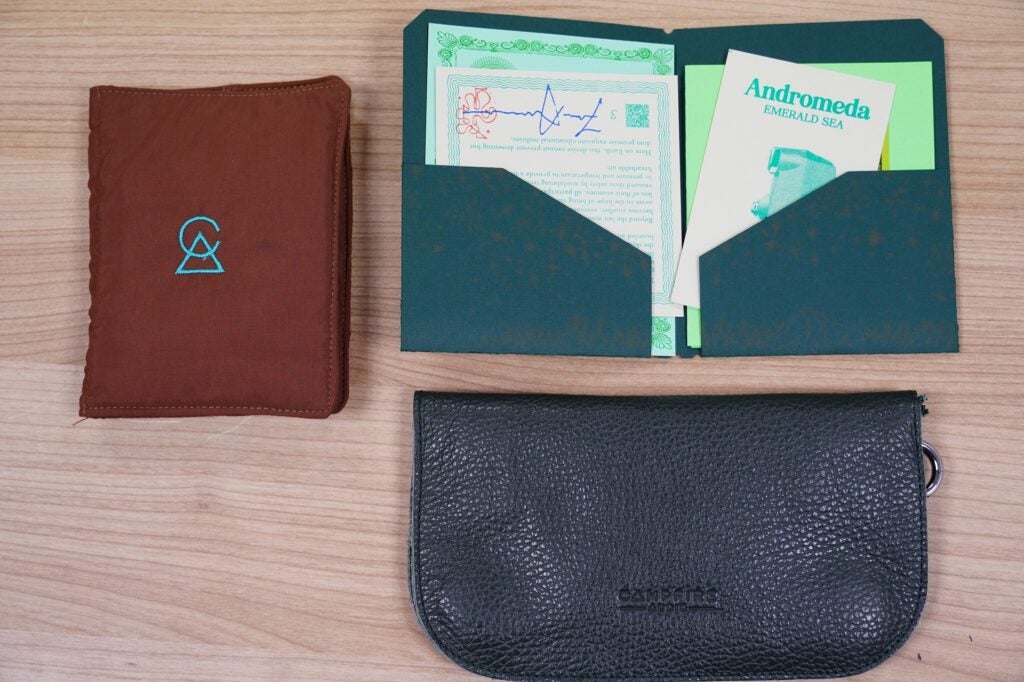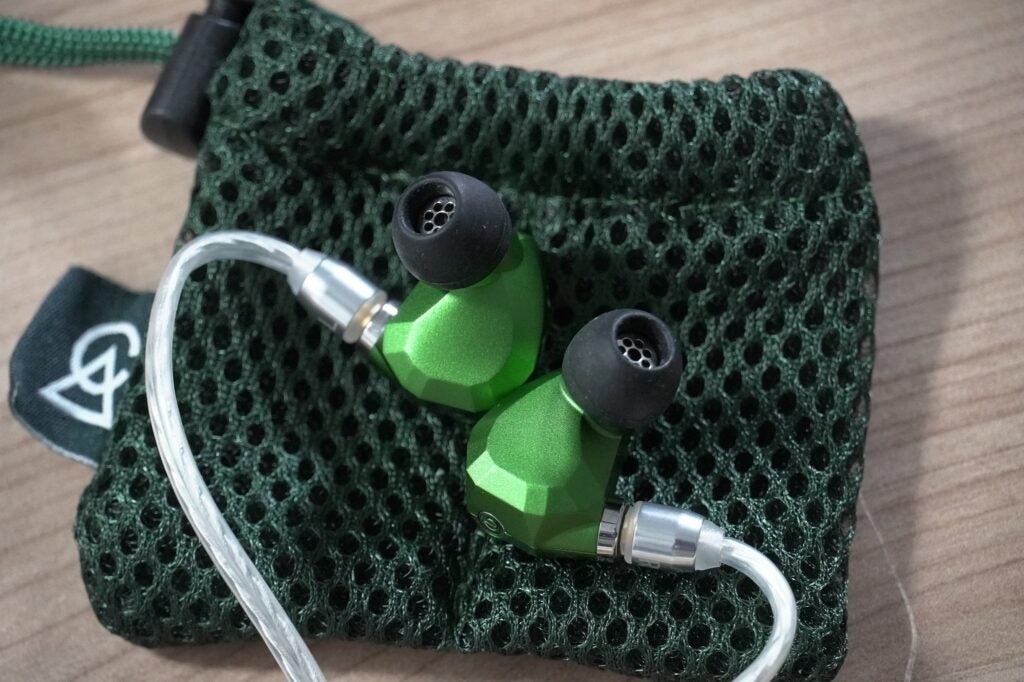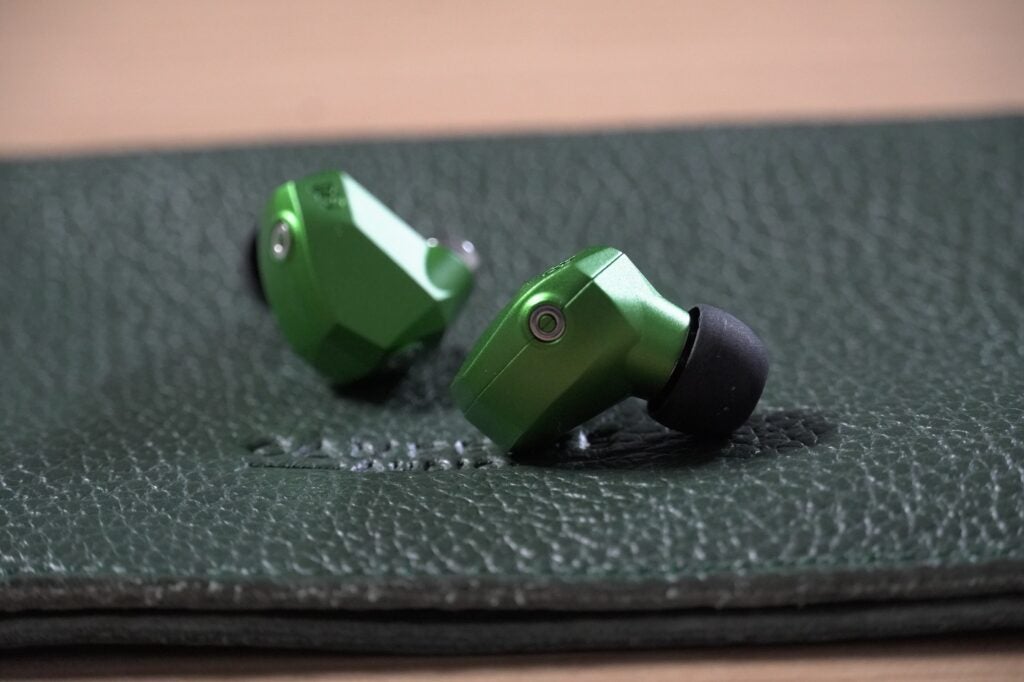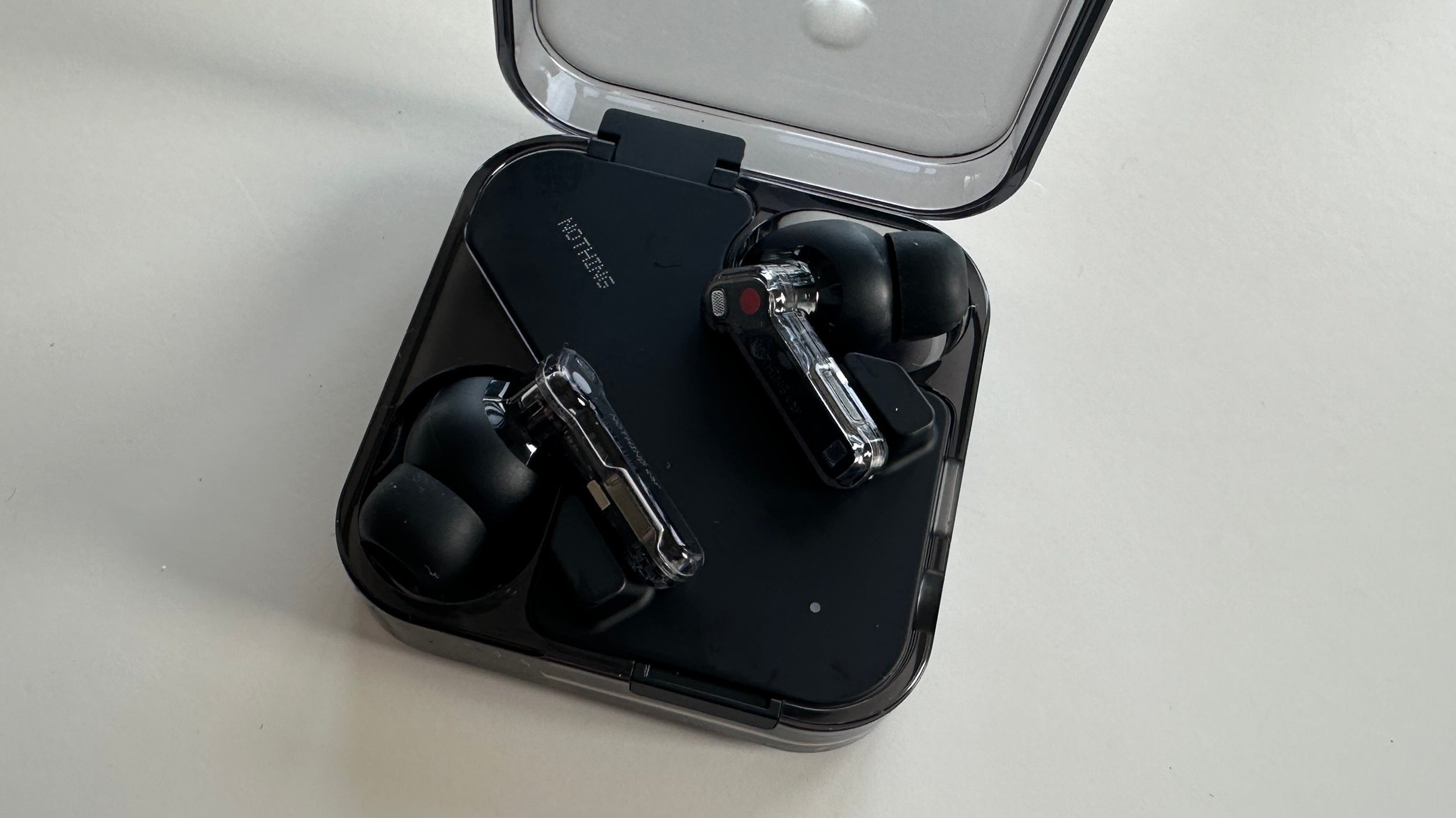Campfire Andromeda Emerald Sea Review
High-end sound, high-end price







Verdict
Offering excitement, panache, and vivid listening experience, the Andromeda Emerald Sea offers a dynamic, immersive sound that’s become Campfire Audio’s trademark. The price is sky high, and they need a sufficiently capable partner to extract the best performance from them, but there’s no doubt the Emerald Sea is a very enjoyable IEM.
Pros
- Exciting, fluid, dynamic sound
- Excellent craftmanship
- Good noise-isolating performance
- Easy to drive
Cons
- Expensive
- Can sound fatiguing at higher volumes
Key Features
- Time Stream cablesPackaged with three Time Stream cables that terminate in balanced and unbalanced connections
- Total Harmonic Noise +DistortionLow noise distortion with audio
- New driversFive new custom dual diaphragm balanced armatures
Introduction
The first time I reviewed the Campfire Andromeda, I wasn’t enthused by them. But a subsequent re-listen opened me up to their charms.
With the sequel now available, and given the loquacious name of Andromeda Emerald Sea, Campfire has re-imagined its best-selling in-ear monitor with new features, both inside and out, for a high asking price.
The price sets all sorts of expectations but the main one is whether the Emerald Sea lives up to its lofty claims.
Design
- Razzle dazzle packaging
- Snug fit
- High quality construction
Campfire’s approach to products hasn’t changed one iota. If anything, it’s amped up with the Emerald Sea.
The box it arrives in is a large wooden one – not unlike wooden Japanese jewellery boxes – with the Campfire Audio logo etched into the side. Lifting the first cover reveals an image of an emerald sea and tucked inside are the earphones along with the rest of the accessories that includes two carry pouches (small and big): a little folder that holds a certification of ownership (this Emerald Sea earphone is no.32) with a seal of approval, among other bits.

There’s another pouch with two more cables (2.5mm TRRS Balanced, 4.4mm Balanced), as well as ear-tips (marshmallow and silicon tips from small to large), an earphone cleaning tool, and what I’m presuming to be the lapel (a hand). It’s all undoubtedly fancy and gives the impression you’ve bought a headphone of high quality. Just like with the previous model, it’s a big first impression.
The only problem is once you’ve taken everything out is how to put it all together again. You won’t want to drop the case either. I did and the sides came off, but some super glue later and it was back to normal.

The earphone is a new 3D printed shape, and it fits fine in my ear but despite looking and feeling as if I’ve plonked the bolts from Frankenstein’s Monster into my ear.
The fit is tight and snug; the cable trails in an over-ear hook design before trailing down across the shoulder. The noise-isolating properties of the seal are strong enough that you won’t be easily disturbed. Better perhaps for indoor use as some awareness will be required if you’re using them outdoors.
The earphones make their presence aware after about an hour, which requires a little more fidgeting in terms of their positioning. I wouldn’t describe them as ultra-comfortable, but I’d recommend breaking up listening sessions every now. I’ve switched to the silicon ear-tip from marshmallow and aside from how they feel, there wasn’t much change in terms in the sound – a little less brash, perhaps.

The finish is excellent, and the construction of the machined aluminium casing is of high quality with its contoured shape bounces light off and cast shadows that are reminiscent of Astell & Kern’s players. To my memory, the Emerald Sea green colourway is lighter than the previous Andromeda but the anodized finish is nonetheless eye-catching.
The Emerald Sea comes with three Time Stream cables, which use silver-plated litz as the signal conductor. It looks good and I’ve not had any issue in terms of comfort. If they do get tangled (which they certainly will), untangling them hasn’t proved to be an arduous issue.
Features
- Low THD
- Easier to drive
- Choice of balanced and unbalanced cables
Features are always few for a wired headphone, but the Emerald Sea appears to have undergone a significant re-tooling.
The drivers have been redesigned with five “all-new” custom dual-diaphragm balanced armatures that Campfire claims reduces distortion and offers greater stability and resilience. Indeed, the Total Harmonic Distortion (the amount of audible noise in the signal) is rated to be less than 0.5%.

The earphones come with an MMCX connection, which makes them a little harder to prise off but has the advantage of making them more secure, clicking into place when fastened to the cable. There are three Time Stream cables, one that terminates in a 3.5mm output, the others in balanced 2.5mm and 4.4mm terminations.
Frequency response covers 5Hz to 20kHz, even though humans can’t really hear below 20Hz. Impedance is measured at 6.375 ohms @1kHz, and Sound Pressure Level (SPL) at 94dB, which implies the Emerald Sea are easier to drive with a range of sources.

Sound Quality
- Exciting, dynamic performance
- Can sound fatiguing at higher volumes
- Expansive soundstage
I wasn’t, initially, a lover of the previous model but enjoyed them more on a second listen. The Emerald Sea fares much better from the get-go.
Used with a few sources and amplifiers: an Astell & Kern SR35, FiiO M15s and a Chord Mojo 2 headphone amplifier, it’s worth taking a little interest in the devices the Andromeda Emerald Sea partners with as the A&K has proven to be a better portable music player. It also doesn’t need to be driven quite as hard, and I’d set the volume low as the Emerald Sea doesn’t need much encouragement to go loud.

All the hallmarks of the Andromeda model carry over here in terms of its tuning, but I’d say that the performance is more balanced. It can still be brash, fiery, and energetic but more so at higher volume levels and it’s at higher volumes where some fatigue sets in.
The soundstage is broad and expansive, as wide as you’ll find on an over-ear pair of wired headphones. Like the previous model, the staging and positioning of instruments and vocals is realised in an impressively vivid manner. It proves itself to be a very dynamic performer, sweeping from highs to lows fluidly and backing up those sweeping dynamic shifts with plenty of power, like with Alex Belcher’s Citadel soundtrack (Qobuz 24-bit/48kHz) or the Meeting Kitty track from Ludwig Göransson’s Oppenheimer that’s a rich, lush, and evocative listen as the track swells and expands.

There’s plenty of clarity awarded to tracks, though there’s a natural warmth to its presentation that does rob it a little of detail and definition. Listening to Talking Heads’ 2023 remaster of the Stop Making Sense live recordings, that warmth is present in the rich and firm bass of Once in a Lifetime and the smooth description of David Byrne’s voice. I would not say the warmth is to the detriment of the overall production, but the Emerald Sea sees a better trade between subtlety and energy than the Orbit true wireless managed.
With Quantum Mechanics from the Göransson’s Oppenheimer (via a Chord Mojo 2) and the earphones afford excellent bass weight, the strings of the violins are sweet and richly presented, high frequency instrument hit with good sharpness and brightness; with dynamism on a small and large scale well observed. All-in-all the Campfire strikes a lively, fluid presentation. What strikes me is the vivid, enveloping nature of the sound.
With a play of Busta Rhymes’ Touch It, the bass is quite well balanced: tight, punchy, conveying plenty of slam, as well as describing the bass with variety. More importantly, that bass is cleanly delivered and distinct from the midrange, avoiding spilling over into it.

I found using it with the SR35 derived more detail and definition, overriding the Emerald Sea’s predilection for warmth and enjoying a clearer, cleaner sound. With The Beatles Long and Winding Road I heard more sharpness, detail, and definition in the treble region than I did on the FiiO M15s, but with the FiiO there’s a bigger emphasis on the voice and a warmer tone overall.
It shows that the Emerald Sea isn’t the driving force in terms of the presentation you hear, and it’s worth considering the characteristics of the source/amplifier at your disposal. In any case, the Emerald Sea is happy to dance with either, though the SR35 is the more refined partner.
A little bit of experimentation is needed to find the right volume too. Too high can lead to fatigue, but too low can cheat its sense of dynamism, and all that energy and liveliness can fade away.
Latest deals
Should you buy it?
You want excitement, flair but balance too: The Andromeda Emerald Sea are much like their forbearers with plenty of energy, but they’re pared down a touch for a more measured performance.
The price makes you shake your head: Nearly $1500 / £1500 for a wired in-earphone is a luxury purchase. If you’re in search of a much more affordable IEM, try the Sennheiser IE 200 instead.
Final Thoughts
The Andromeda Emerald Sea are absurdly expensive for a wired in-earphone – $1450 / £1499 is out of the question for most mere mortals. They’d also need a high-quality source to extract the best performance from them.
So as long as you a) have the budget and b) have those requisite high-quality sources, the Emerald Sea offers thrillingly expansive, dynamic, and energetic performance. From the packaging they come in, to the build quality, and eventual sound, the Andromeda Emerald Sea exerts a high level of luxury and performance. They’re an immersive listening experience.
How we test
We test every set of headphones we review thoroughly over an extended period of time. We use industry standard tests to compare features properly. We’ll always tell you what we find. We never, ever, accept money to review a product.
Find out more about how we test in our ethics policy.
Tested over several weeks
Tested with real world use
FAQs
Campfire states the Emerald Sea’s frequency response runs from 5Hz to 20kHz.








